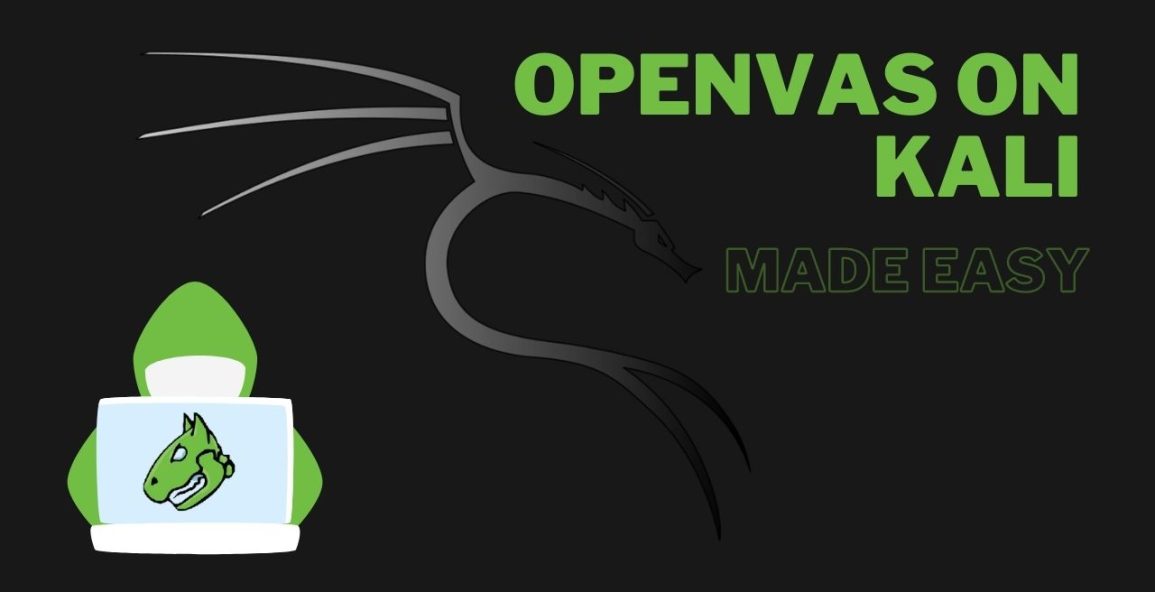
What is OpenVAS?
An effective tool for identifying and evaluating security flaws in a network is OpenVAS, an open-source vulnerability scanner. It is an essential part of every company’s cybersecurity toolkit. OpenVAS enables security experts to proactively detect vulnerabilities before malevolent actors can take advantage of them thanks to its extensive library of known vulnerabilities and variety of scanning methodologies.
The Use Case for OpenVAS
At its core, OpenVAS serves several essential purposes:
- Vulnerability Identification
Your network is scanned by OpenVAS to look for known vulnerabilities in systems, software, and configurations. By identifying these vulnerabilities, you may take preventative action to fix them before hackers take use of them.
2. Risk Mitigation
OpenVAS offers practical insights to assist in risk prioritization and mitigation if vulnerabilities are discovered. This enables businesses to focus on resolving the most important security issues first and to deploy resources in an efficient manner.
3. Compliance
Organizations must regularly undertake vulnerability assessments as part of compliance efforts, as mandated by numerous industries and regulatory agencies. By offering comprehensive information on vulnerabilities and their state of remediation, OpenVAS assists in meeting these standards.
Leveraging OpenVAS in Vulnerability Management
An important component of cybersecurity is vulnerability management, and OpenVAS is crucial to this procedure. Here’s how to do it:
1. Detection
OpenVAS regularly scans an organization’s network and systems to find vulnerabilities. This proactive strategy shortens the window of opportunity for possible attackers by enabling early detection and response.
- Prioritization
Vulnerabilities are not all made equal. OpenVAS classifies vulnerabilities according to their severity and possible effect, which helps prioritize remedial efforts. This guarantees that funds are allotted to deal with the most pressing problems first.
- Remediation
After vulnerabilities are found, OpenVAS offers recommendations on how to successfully fix them. Following the implementation of repair steps, retest scans can confirm that these efforts were successful.
Here are the top 10 use cases of OpenVAS:
4. Compliance Reporting
OpenVAS produces compliance reports that show adherence to security standards and give proof of vulnerability assessment activities for enterprises that must comply with regulatory requirements.
In the fight to safeguard your digital assets, OpenVAS is a powerful ally in a world where cyber threats are always changing. You can use OpenVAS to protect the cybersecurity posture of your company by being aware of its goals, the distinctions between credentialed and unauthenticated scans, and its function in vulnerability management.
By utilizing OpenVAS in your toolkit, you can proactively secure your network by addressing vulnerabilities one by one rather than merely responding to attacks.
Are you prepared to use OpenVAS to strengthen your cybersecurity defenses going forward? Explore your network’s hidden weaknesses and use OpenVAS as a roadmap to a safer online environment.
Top 10 use cases of OpenVAS?
Here are the top 10 use cases of OpenVAS:
- Vulnerability Scanning: To find known vulnerabilities, configuration errors, and possible security flaws, OpenVAS scans hosts, networks, and applications.
- Plugin-Based Architecture: OpenVAS supports a variety of vulnerability checks and security tests thanks to its plugin-based architecture. It is possible to update and install new plugins to stay up to current on the most recent vulnerabilities.
- Compliance auditing is a useful tool for evaluating adherence to a range of legal and security standards, including CIS benchmarks, PCI DSS, and HIPAA.
- Network Discovery: To keep an up-to-date inventory, OpenVAS assists enterprises in locating and classifying every system and device connected to their network.
- Web Application Scanning: OpenVAS is capable of scanning web applications for typical vulnerabilities such as weak authentication, SQL injection, and cross-site scripting (XSS).
- Customizable Scans: To customize OpenVAS scans to meet their unique requirements, users can set up target hosts, scan policies, and other factors.
- Credentials-Based Scanning: OpenVAS facilitates scanning using credentials, enabling more thorough evaluations of hosts, such as configuration checks and software inventories.
- Prioritizing Vulnerabilities: OpenVAS helps organizations prioritize remediation efforts based on risk by assigning severity ratings to vulnerabilities that are discovered.
- Integration: To create a complete security ecosystem, OpenVAS may integrate with other security platforms and technologies, such SIEM systems.
- Reporting: It produces thorough reports with ratings for severity, descriptions of vulnerabilities, and suggestions for mitigation. These reports are adaptable to the needs of various stakeholders.
How OpenVAS works and Architecture?
OpenVAS works by conducting scans on target systems and analyzing the results to identify vulnerabilities and potential security issues. Here’s a simplified overview of how OpenVAS works:
- Scan Configuration: Users configure OpenVAS scans by defining target hosts, specifying scan policies (e.g., which types of vulnerabilities to check), and setting other scan parameters.
- Scanning: OpenVAS performs scans on the target systems based on the configured policies. It sends various probes and checks to detect vulnerabilities, misconfigurations, and potential security risks.
- Vulnerability Detection: During the scan, OpenVAS identifies vulnerabilities by comparing its findings with a constantly updated database of vulnerability checks (plugins).
- Data Analysis: OpenVAS analyzes the scan results and assigns severity levels to each identified vulnerability, helping organizations prioritize remediation efforts.
- Reporting: OpenVAS generates detailed reports that include a list of vulnerabilities, their descriptions, severity ratings, and recommendations for mitigation.
OpenVAS Architecture:
OpenVAS typically consists of several components that work together to provide vulnerability scanning and management capabilities:
- OpenVAS Scanner: This component conducts the actual scanning of target hosts and collects scan results. It communicates with the OpenVAS Manager to fetch scan configurations and report results.
- OpenVAS Manager: The manager coordinates the scanning process, manages scan policies, and stores scan results. It acts as the central control point for managing and scheduling scans.
- OpenVAS CLI and GUI: These are the user interfaces for interacting with OpenVAS. The CLI provides a command-line interface, while the GUI offers a graphical user interface for configuring scans, viewing results, and generating reports.
- OpenVAS Greenbone Security Assistant (GSA): GSA is a web-based interface that allows users to manage and configure OpenVAS scans through a web browser.
- OpenVAS Knowledge Base (NVTs): The knowledge base contains a vast collection of Network Vulnerability Tests (NVTs), which are plugins used to detect vulnerabilities.
- OpenVAS OpenVAS Transfer Protocol (OTP): OTP is used for communication between various components of OpenVAS.
OpenVAS can be deployed on a single server or in a distributed architecture for scalability. Communication between these components is secured to protect sensitive scan data.
OpenVAS is a powerful tool for vulnerability assessment and management and is particularly valuable for organizations looking for an open-source solution to identify and address security vulnerabilities in their infrastructure.
